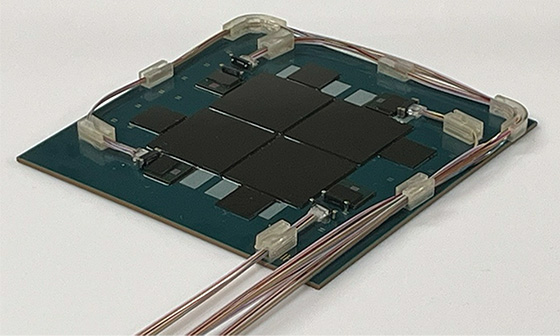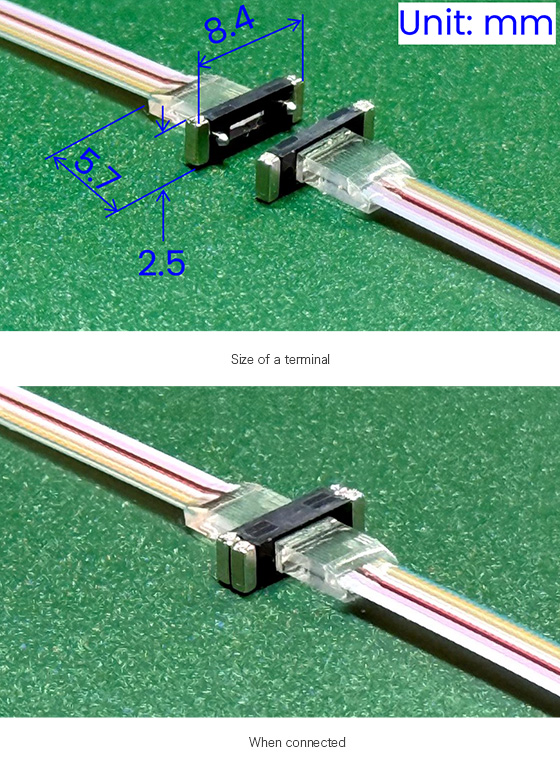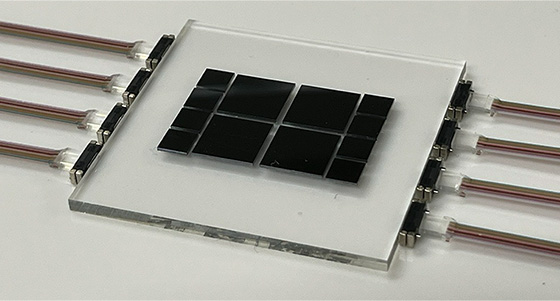An epoch compact multi-fiber optical connector suitable for CPO
- Solving the issue of optical connectivity for CPO and promoting the social implementation -
- Furukawa Electric Co., Ltd. developed a new multi-fiber optical connector that has excellent workability, low loss and is suitable for high-density multi-series attaching.
- Reflow-compatibility for optoelectronics devices in CPO was realized.
- An oral presentation and sample exhibit will be given at OFC 2025 held in San Francisco, USA.
Furukawa Electric Co., Ltd. (Head office: 2-6-4 Otemachi, Chiyoda-ku, Tokyo; President: Hideya Moridaira) newly developed the compact 12-fiber optical connector suitable for CPO (Co-Packaged Optics).
Background
The rapid spread of generative AI has accelerated the development of CPO for datacenter applications. In CPO, an optical transceiver is placed close to a large-scale LSI (Large Scale Integration) such as a switch ASIC (Application Specific Integrated Circuit) or a GPU (Graphics Processing Unit), and the length of the electrical transmission line can be shortened. Therefore, high-speed communication and low power consumption are expected by CPO. For the deployment of CPO, it is necessary to realize a compact, easy-to-use, detachable optical fiber connector at the edge of the optical transceiver device (Fig. 1).
Details
The newly developed 12-fiber optical connector is significantly smaller than conventional multi-fiber optical connectors, with a connection area that is 1/6 MPO connectors (Fig. 2). The semi-automatic connection method using magnets provides excellent connection workability. The connector can withstand 260°C reflow (the process of soldering components to the substrate) that is necessary to be assembled to a CPO substrate. It also employs optical coupling with lenses(note), there is very little degradation in characteristics when dust adheres to the optical end face, it is also suitable for dusty environments such as data centers. The connection loss is less than 0.5 dB with good repeatability within ± 0.05 dB.
This developed connector can also be used as a compact multi-fiber optical connector for connecting optical fibers. In addition to high-density attaching to a glass waveguide substrate that is expected to be applied to the next-generation photonics-electronics convergence form (Fig. 3), it is also applicable to more-fiber structures such as 16-fiber. We are currently developing 40-fiber optical connector.
At OFC 2025, which will be held in San Francisco, USA, from March 30 to April 3 this year, we will give an oral presentation (Lecture No. M4J. 2) and exhibit samples (in the booth of Lightera, booth No. 2843).



This development is partly based on results obtained from the project, “Research and Development Project of the Enhanced Infrastructures for Post-5G Information and Communication Systems” (JPNP20017), commissioned by the New Energy and Industrial Technology Development Organization (NEDO).
(Note) Since the diameter of the optical path is expanded by the lens, if dust adheres to the optical path, the area of the dust compared to the optical path becomes relatively small, and the ratio of the light to be shielded is reduced, so that the loss degradation is suppressed.
Related News Release
Furukawa Electric Group’s efforts towards the SDGs
Based on the “Sustainable Development Goals (SDGs)” adopted by the United Nations, Furukawa Electric Group has formulated the “Furukawa Electric Group Vision 2030” which sets the year 2030 as its target and is advancing efforts with the aim to “Build a sustainable world and make people’s life safe, peaceful and rewarding, Furukawa Electric Group will create solutions for the new generation of global infrastructure combining information, energy and mobility.” Toward the achievement of our Vision 2030, we will take open, agile, and innovative approaches to promote ESG management that aims to increase corporate value over the medium to long term and will contribute to the achievement of the SDGs.







 Share
Share Tweet
Tweet Share
Share